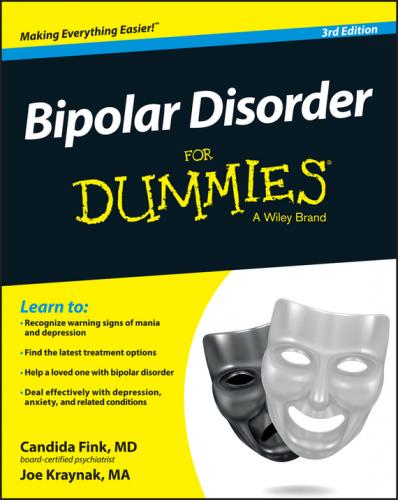Treatment of both substance abuse and bipolar disorder is challenging, and having both adds many layers of challenges to the treatment. Resolution of bipolar symptoms may be quite difficult to achieve in the context of active substance abuse, and substance abuse is particularly difficult to address during active mood episodes. Successfully managing both disorders is necessary for long-term recovery from both.
Research in this area has suggested that about 20 percent of adults with all types of bipolar disorder have ADHD. Researchers have suggested that bipolar disorder that overlaps with ADHD might be a particular subtype of bipolar. In children with bipolar disorder, the distinction between bipolar and ADHD and the levels of overlap remain difficult issues to resolve. Some researchers have suggested significantly high levels of comorbidity in children, but others have found the levels to be much lower. Stay tuned for more information as the research unfolds.
Personality disorders are conditions in which the development of emotional, social, and behavioral systems is disrupted, causing significant, lifelong problems with function. Personality disorders are divided into clusters and then further into specific types; for example Cluster B personality disorders include borderline, antisocial, histrionic, and narcissistic personality disorders. Studies suggest that about 30 to 40 percent of people with bipolar disorder also meet criteria for a personality disorder.
Personality disorders are difficult to treat and often don’t respond to medications. Psychotherapies are becoming more and more effective; people with personality disorders often have difficulty gaining insight into how their problems affect their lives, because they’ve never known a more adaptive level of functioning. Without insight, trying to address the problems is quite difficult. Layering these challenges onto a bipolar disorder adds tremendously to the difficulties of achieving sustained recovery.
Childhood trauma may be closely related to the development of some personality disorders, including borderline personality disorder. Early trauma can have damaging effects on the development of emotional and interpersonal skills. Identifying and addressing trauma is an important part of managing these conditions.
Problems with cognitive skills such as memory and attention and the ability to think clearly are common in bipolar disorder, both during and between mood episodes. Compounding the cognitive issues inherent in bipolar is that fact that some medications used to treat bipolar can cloud thinking as a side effect. Addressing problems with thinking and memory is important in recovery from bipolar disorder to help people get back on their feet in terms of work, life management, and interpersonal and leisure time skills.
Confronting the Challenges of Diagnosing Children and Teens
The diagnosis of bipolar disorder in children (up to the age of 12) and adolescents (teenagers) has been an area of debate and controversy for close to 20 years. Even professionals in the field fundamentally disagree about some features of diagnosing this disorder in young age groups. The consensus that’s evolving, however, is straightforward: To be diagnosed with bipolar disorder, children need to exhibit the same patterns of energy and mood changes that adults do – at least one period of mania or hypomania, often associated with episodes of depression.
The high energy and impulsivity that are prominent in manic episodes are core symptoms of one of the most common psychiatric conditions in children – ADHD. The evolving diagnostic criteria for bipolar disorder in children don’t count high energy and impulsivity toward a manic episode diagnosis unless these symptoms become significantly worse during a sustained period of time (not just a few hours).
Irritable mood – one possible symptom in mania – is also a common symptom in childhood, and many medical, developmental, or psychiatric issues can cause it. Unless the irritability occurs in cycles – sustained periods of time in which it’s much more severe than the child’s usual temperament – it doesn’t count toward a diagnosis of bipolar disorder. DSM-5 contains a new diagnosis called disruptive mood dysregulation disorder. The purpose of introducing this diagnosis is to have a way to describe and research chronically irritable and explosive children without inappropriately labeling them as having bipolar disorder. The criteria for DMDD include
✔ Severe recurrent temper outbursts that are grossly out of proportion in intensity or duration to the situation or provocation.
✔ The temper outbursts are inconsistent with developmental level.
✔ The outbursts occur on average three or more times per week.
✔ The mood between outbursts is persistently irritable or angry most of the day, nearly every day, and is observable by others.
✔ The symptoms have been present for 12 or more months and there hasn’t been a period lasting three or more consecutive months without the patterns of irritability and outbursts.
✔ The symptoms aren’t part of a manic episode or better explained by major depression or other psychiatric or neurodevelopmental disorders, including anxiety disorders and autism.
This research is ongoing, and many researchers are still exploring whether bipolar disorder can look significantly different in children and teens. But, whatever the studies reveal, doctors know that they must be cautious and diligent when evaluating young patients with mood symptoms. The medications used to treat mania are powerful and have many side effects, and a diagnosis of bipolar may prevent the use of medications to treat ADHD or anxiety and depression. Therefore, a misdiagnosis in a child can have significant long-term consequences.
Obtaining an early, accurate diagnosis of a child’s difficulties and identifying whether the cause is bipolar disorder or something else is the most critical step in helping the child or adolescent manage a mood problem. See Chapter 21 for more about diagnosis and treatment options for children and teenagers who may be dealing with a mood disorder.
During my battle with bipolar disorder, I was unaware of the consequences of my risky behavior – abusing substances, having promiscuous sex, staying up all
